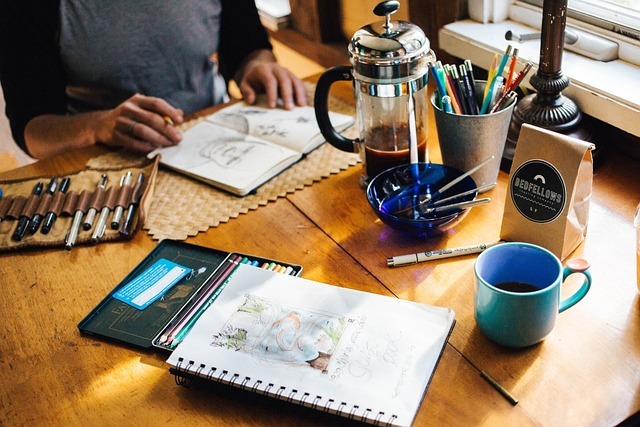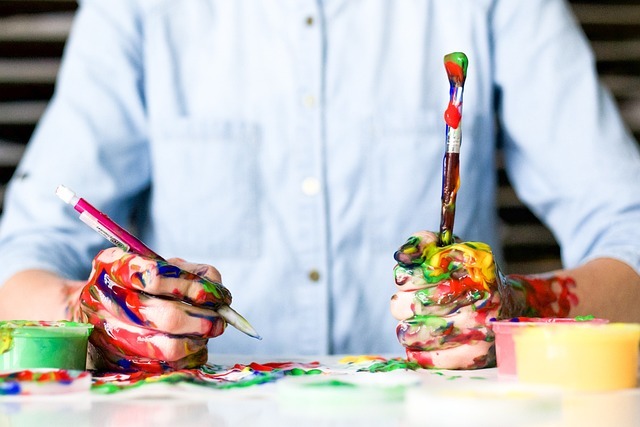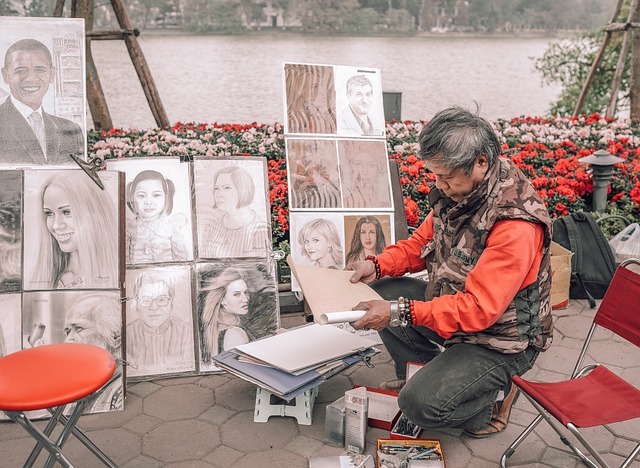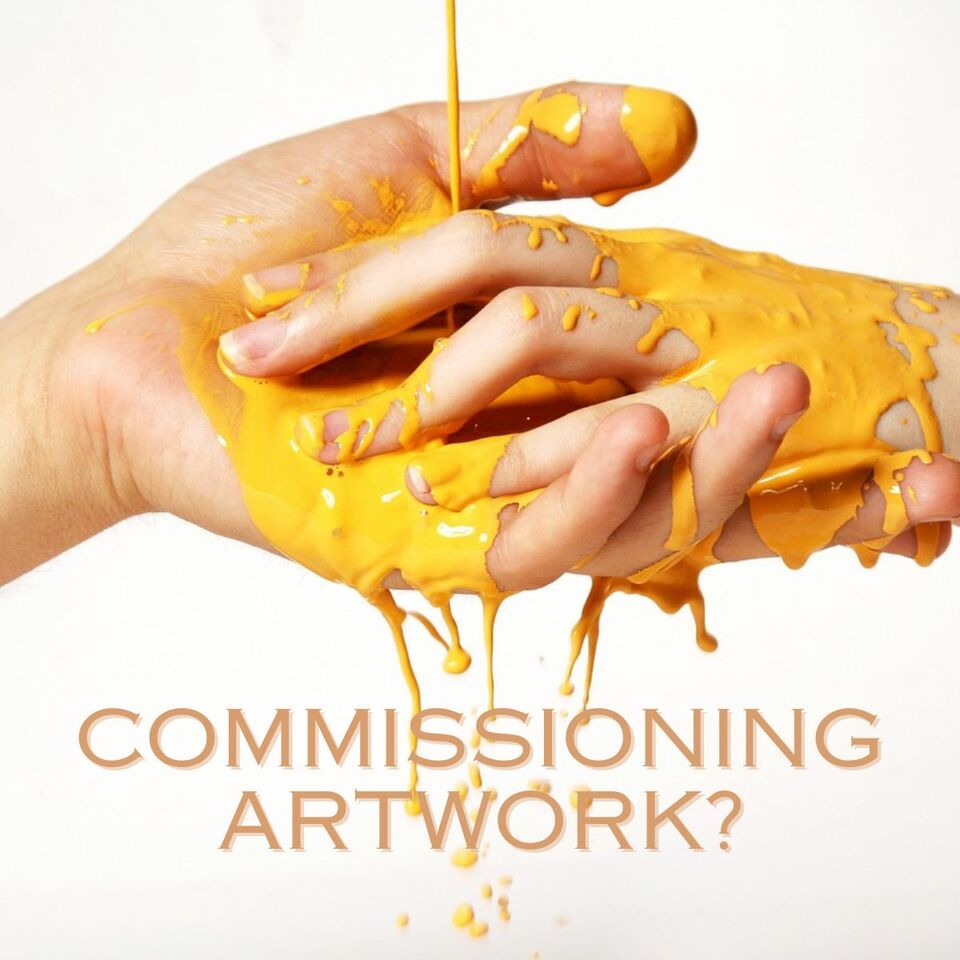The Art of Commissioning: A Guide to Ordering Custom Artwork
What is Art Commissioning?
Commissioning art is a personalised process where individuals or organisations hire artists such as myself to create custom artworks based on their specific requirements. This collaborative approach allows clients to be directly involved in creating a piece that resonates with their vision and needs.
The scope of commissioned art is broad, encompassing various mediums such as paintings, sculptures, illustrations, murals, and digital art. It offers a platform for artists to showcase their skills while providing clients with unique, tailor-made artwork that reflects their personality, style, or brand identity.
Art commissioning is not limited to personal collections; it also extends to public spaces, businesses, and institutions seeking to enhance their environments with art that conveys specific messages or themes. This process fosters a meaningful connection between artists and patrons, resulting in the creation of art that is both visually appealing and emotionally resonant.
If you're considering commissioning art, it's essential to understand the process and the benefits it offers.
Commissioned art allows for personalisation, collaboration with the artist, the creation of meaningful artwork, support for artists, and the opportunity for a unique investment. Additionally, commissioned art can enhance spaces and create memorable experiences for viewers.
Overall, commissioning art is a rewarding experience that allows you to bring your vision to life and create a piece of artwork that is truly special and meaningful to you.
Benefits of Commissioning Art
Commissioning art offers a range of benefits that extend beyond acquiring a piece of artwork. It provides a unique opportunity for individuals and organisations to engage with artists and participate in the creative process. Here are some key benefits:
-
Personalisation: Commissioned art allows you to customise the artwork according to your preferences, ensuring that it aligns with your vision, style, and space. This level of personalisation results in a piece that is truly one-of-a-kind and reflective of your taste and personality.
-
Collaboration: Commissioning art involves collaborating with the artist, allowing you to contribute ideas and provide feedback throughout the creative process. This collaborative approach fosters a deeper connection with the artwork and the artist, creating a sense of ownership and pride in the final piece.
-
Meaningful Artwork: By working closely with the artist, you can ensure that the final piece carries a personal or symbolic meaning that is important to you. This can make the artwork more meaningful and significant, adding a layer of depth and emotion to your collection.
-
Supporting Artists: Commissioning art directly supports artists by giving them opportunities to showcase their talent and creativity. It also helps sustain their livelihood, allowing them to continue pursuing their passion and producing high-quality artwork.
-
Unique Investment: Commissioned art can be a unique and valuable investment, especially if the artist gains recognition or the artwork becomes highly sought after. Unlike mass-produced art, commissioned pieces are exclusive and hold sentimental value, making them a meaningful addition to your collection.
-
Enhanced Spaces: Commissioned art can transform a space, whether it's a home, office, or public area, by adding a touch of creativity and uniqueness. The artwork can serve as a focal point, sparking conversation and creating a memorable experience for visitors.
Overall, commissioning art offers a range of benefits that go beyond aesthetics, providing a fulfilling and enriching experience for both the patron and the artist.

How Much Does it Cost to Commission an Artist?
The cost of commissioning an artist can vary widely depending on several factors, including the artist's experience, the size and complexity of the artwork, the medium used, and the artist's reputation. Here are some key factors that can influence the cost:
-
Artist's Experience: More experienced artists may charge higher fees due to their skill level and reputation in the art world. They may also have a higher demand for their work, which can drive up prices.
-
Size and Complexity: The size and complexity of the artwork can also impact the cost. Larger and more intricate pieces may require more time and resources, resulting in a higher price tag.
-
Medium: The medium used can also affect the cost. For example, oil or acrylic paint may be more expensive than watercolour, and the canvas or board used can also contribute to the overall cost.
-
Additional Costs: Besides the artist's fee, there may be extra costs such as framing, shipping, or installation. It's important to discuss these costs upfront and factor them into your budget.
When commissioning an artist, it's important to discuss pricing upfront and clearly understand what is included in the price. This can help you avoid any misunderstandings or unexpected costs down the line. It's also a good idea to ask for a written agreement outlining the terms of the commission, including the price, timeline, and any other relevant details.
The cost of commissioning an artist can vary depending on your specific requirements and the artist's pricing structure. Discussing pricing and other details upfront can ensure a smooth and transparent commissioning process.

How Much Do Artists Make Off of Commission?
Earnings can vary widely depending on the artist's reputation, the size and complexity of the artwork, and other factors. Some artists may charge a flat fee for their services, while others may work on a commission basis, where they receive a percentage of the final sale price. If it's via a gallery or institution, they will often only receive around 50% or even less of what you pay.
If you're an artist yourself please take a look at my insider tips for commissioned art in this article -
Commissioned Artwork Made Easy: Insider Tips for Artists
What Is The Process of Commissioning Art?
Commissioning art involves several vital steps to ensure the final artwork meets your expectations and vision. Here's a typical process:
-
Initial Consultation: Discuss your ideas, budget, and timeline with the artist. This consultation allows both parties to establish a clear understanding of the project's scope and requirements.
-
Agree on Terms: Once you've discussed the project details, agree on the terms of the commission, including the size, medium, style, and any other specific requirements. It's also important to discuss pricing, payment schedules, and deadlines so there are no misunderstandings.
-
Sketch or Mockup: The artist will usually create a preliminary sketch or mockup of the artwork based on your discussions. This lets you visualise the final piece and make necessary changes before work begins.
-
Approval of Design: After reviewing the sketch or mockup, provide feedback to the artist. Once you're satisfied with the design, you should approve it before proceeding to the next stage.
-
Creation of Final Piece: With the approved design in hand, the artist will begin work on the final piece. Depending on the complexity of the artwork and the artist's process, this may involve several stages.
-
Completion and Delivery: Once the artwork is complete, the artist will notify you and arrange delivery or pickup. Inspecting the artwork when you receive it is essential to ensure it meets your expectations.
-
Final Payment: After receiving the artwork and confirming your satisfaction, make the final payment to the artist as per the agreed-upon terms.
Each step of the process is crucial in ensuring a successful commissioning experience, resulting in a unique and personalised artwork that you'll cherish for years to come.
Proper Way to Ask an Artist for a Commission
Commissioning art is a collaborative process that requires clear and respectful communication between you and the artist. Here are some tips for asking an artist for a commission:
-
Introduce Yourself: Start by introducing yourself and explaining why you're interested in commissioning the artist. This can help establish a personal connection and show your genuine interest in their work.
-
Be Specific: Clearly explain what you're looking for in the artwork. Provide details such as the size, medium, style, and any specific themes or ideas you have in mind. The more specific you are, the better the artist can understand your vision and create a piece that meets your expectations.
-
Be Open to Input: While having a clear idea of what you want is important, be open to the artist's input and suggestions. Artists are creative individuals who have unique ideas that can enhance your vision and result in a more dynamic and engaging artwork.
-
Respect Their Style: It's important to respect the artist's style and expertise. For example, asking a cartoonist to paint a realist piece may not align with their artistic style or strengths. Before approaching them for a commission, take the time to familiarise yourself with the artist's work.
-
Discuss Terms: Once you've agreed on the details of the commission, such as the size, medium, and price, discuss the terms of the agreement. This includes the timeline for completion, payment schedule, and any other relevant details. It's also a good idea to have a written contract outlining these terms to avoid any misunderstandings.
By following these tips, you can ensure a positive and productive experience when asking an artist for a commission. Remember, commissioning art is not just about acquiring a piece of artwork; it's about collaborating with an artist to create something truly unique and meaningful.

Dos and Don'ts of Commissioning Art
Commissioning art is a collaborative process that requires clear communication and mutual respect between you and the artist. Here are some dos and don'ts to keep in mind:
Dos:
-
Communicate Clearly: Clearly communicate your ideas, expectations, and requirements with the artist. This will help ensure that the final piece meets your vision.
-
Be Open-Minded: Be open to the artist's ideas and suggestions. They are professionals and may have insights that can enhance your vision.
-
Respect the Artist's Process: Avoid rushing the artist or pressuring them to finish quickly. Art takes time, and rushing the process can compromise the quality of the artwork.
-
Be Patient: Good art takes time, so be patient with the artist as they work on your commission. Remember, the end result will be worth the wait.
-
Provide Feedback: Provide constructive feedback to the artist throughout the process. This will help them understand your preferences and make any necessary adjustments to the artwork.
Don'ts:
-
Don't Micromanage: Avoid micromanaging the artist. Trust their expertise and give them the creative freedom to bring your vision to life.
-
Don't Expect Perfection: While you should expect high-quality work, it's essential to understand that art is subjective, and aspects of the final piece may not meet your exact expectations.
-
Don't Compare to Other Artworks: Avoid comparing the artist's work to other artworks. Each artist has their own unique style and approach, and it's important to appreciate their work for its individuality.
-
Don't Disregard the Contract: If you've agreed upon terms and signed a contract, make sure to adhere to it. This includes payment schedules, timelines, and any other agreed-upon details.
By following these dos and don'ts, you can ensure a positive and rewarding experience when commissioning art. Remember, the goal is to create a piece of art that you'll cherish for years to come, so enjoy the process and appreciate the artist's creativity and skill.
Conclusion
My journey as a New Zealand artist means I’ve often created commissioned artworks for clients. Each project has taught me how to improve the process, enabling me to share it with you.
I’ve had my share of people asking for the impossible, the unexpected, and the best experiences, too. I've made friends and learnt new things. I highly recommend that you look for the right artist who works in a style or medium you like and communicates both verbally and visually.
Having snippets of colour swatches and mood boards of ideas will help your artist understand what you are expecting. And remain open-minded to interpretation.
Commissioning art is not just about acquiring a piece of artwork; it's about creating a meaningful connection between you and the artist. It's a collaborative process that allows you to bring your vision to life and create something truly unique.
So, if you've ever thought about commissioning art, don't hesitate to reach out to an artist and start the conversation. The end result should be a masterpiece that speaks to your soul.
Don't forget to take a look at my original nz art for sale
